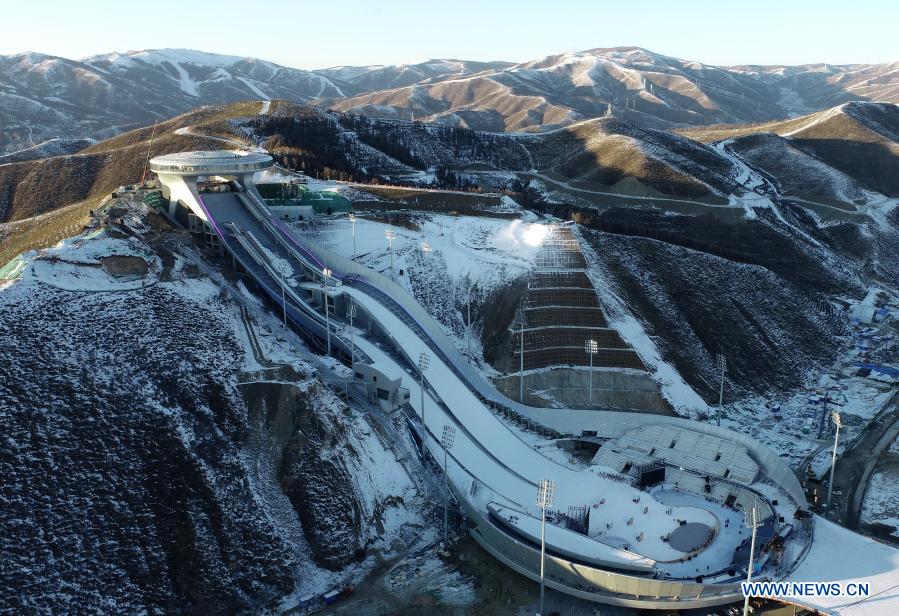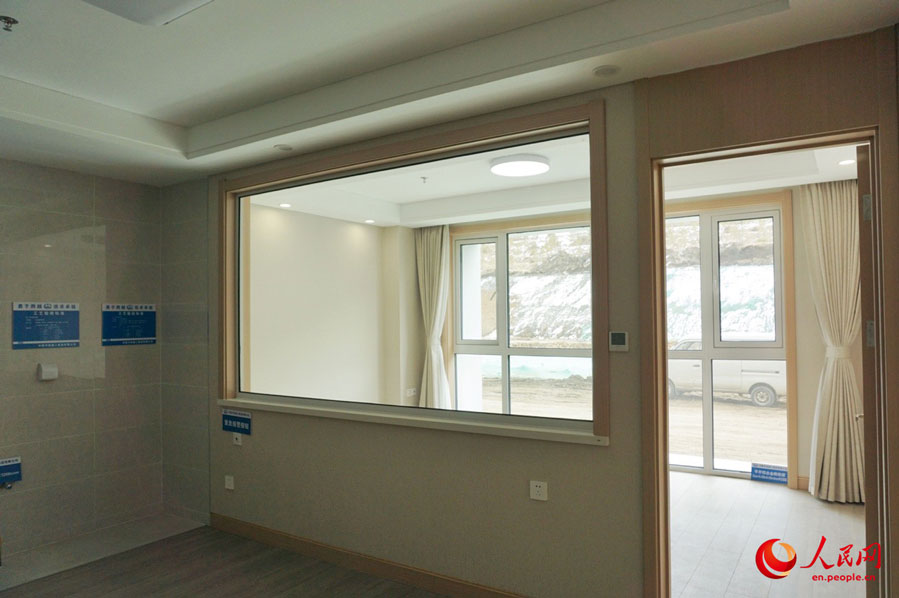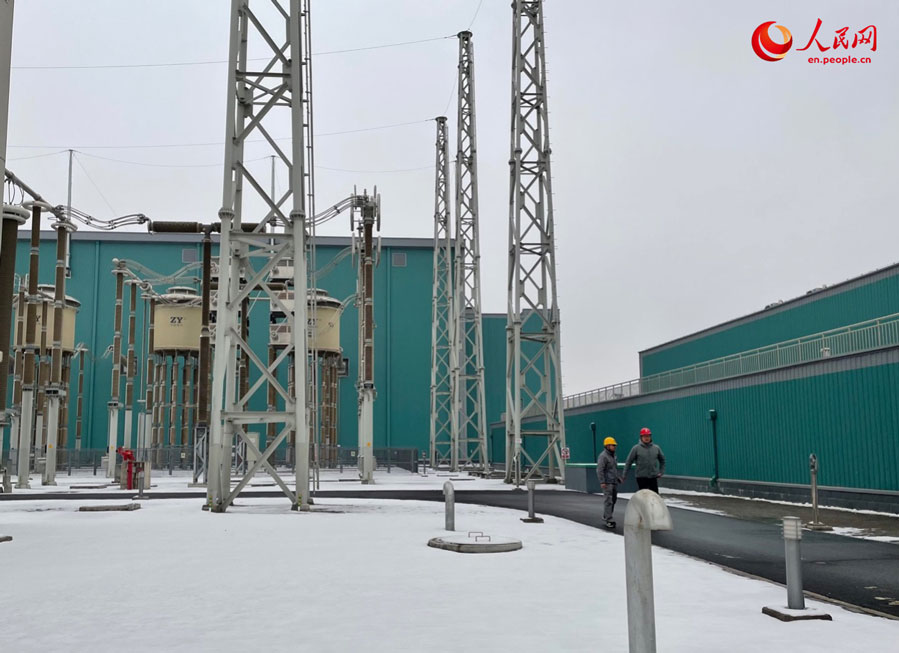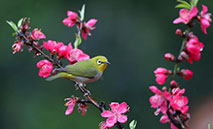Going for green: Zhangjiakou is ready for the 2022 Winter Olympics

Aerial photo taken on Dec. 19, 2020 shows the National Ski Jumping Center in Chongli District of Zhangjiakou City, north China's Hebei Province. (Photo/Xinhua)
'Green' is the keyword for the 2022 Beijing Winter Olympics. Last year, the Beijing Organizing Committee for the 2022 Winter Olympics Games released a sustainability plan promising that the Games would be in line with the U.N.'s sustainable development objectives to hold "green, inclusive, open and clean" events.
Zhangjiakou, a co-hosting city for the 2022 Beijing winter Olympics, is in full swing for its green Olympics preparation, vowing to make the event as environmentally sustainable as possible.
To meet the goal of a low-carbon Winter Olympic Games, Zhangjiakou has resorted to two approaches: constructing sustainable venues that can be utilized after the Games and making use of renewable energy.
Post-Olympics utilization
In consideration of the international standards for sustainability, all venues will be adjusted for post-Olympics utilization after the completion of the Winter Olympic and Paralympic Games.
Genting Snow Park, the venue that will host freestyle skiing and snowboard competitions in the 2022 Beijing Winter Olympics, will reopen as a ski resort to the public for sightseeing and continue to play host to Winter Olympics facilities and exhibitions after the Games. Therefore, those who miss the 2022 Winter Olympic Games can still enjoy some spectacular scenes and highlights from the Games.
"This will not only boost the business of the Genting Snow Park but also help the general public appreciate the glamor of the Winter Olympics and better understand the Olympic spirit," said Wang Baoqi, vice president of Genting Resort Secret Garden Tourism Development Co. Ltd.
"After the post-Games adjustment, the Olympics-grade pistes in the Genting snow park will be converted into high-level pistes open to ski enthusiasts who want to challenge themselves," Wang added.
A ten minute drive away from Genting is the Zhangjiakou Olympics Village with over 27,000 beds to accommodate athletes during the Winter Olympics in comfortable fashion. Much like the Genting Snow Park, the concept of sustainability can be seen throughout the construction of the village.
A premodern archeological site from the Jin Dynasty (1115 CE – 1234 CE) was found near the construction area, with the site having an overlap of six hectares of land with the planned Olympic Village. By upholding the spirit of protecting the landscape and historical culture, the design team decided to relocate the village roughly 200 meters to the east, according to Zhang Mingqi, a designer from the Architectural Design and Research Institute of Tsinghua University.
Apart from adapting to the features of the landscape, the Olympic Village is also being developed with an eye to post-Olympics utilization. According to Zhang, after the Beijing Winter Olympics, these rooms will be converted into ski lodgings for winter sports lovers. "Considering their future function, most rooms in the Zhangjiakou Winter Olympic Village are 40 to 50 square meters in size and with tailor-made zones designed for skiing equipment," said Zhang. "For those ski enthusiasts who intend to visit Zhangjiakou with their friends or family for shorter periods of time, the rooms are ideal as they are not necessarily big, just so long as they are comfortable," Zhang added.
Other venues in the Zhangjiakou Competition Zone, such as the National Ski Jumping Center, have also initiated plans for after the end of regular operations during the Games. "The post-Games utilization plans aim to integrate the Winter Olympics venues and infrastructure into the local social and economic development plan. This type of sustainable development effort will avoid the dilemma of leaving behind Olympics venues, letting them go to waste," said Wang Yanxia, a member of the Beijing Organizing Committee.

Photo taken on March 17, 2021 shows the Zhangjiakou Winter Olympic Village in Chongli District of Zhangjiakou City, north China's Hebei Province. The construction of the Winter Olympic Village in Zhangjiakou has been completed and follow-up work will be done to improve the infrastructure and greenery in the area. (People's Daily Online/Zhou Yu)
Renewable Energy
Apart from making sustainable use of the Olympic venues, renewable energy is also playing an essential role in achieving a Green Olympics. All the 2022 Winter Olympics venues will run on green energy, which will be the first time ever throughout the history of the Olympic Games.
To reduce energy consumption and the impact on the environment, Zhangjiakou has turned to its rich natural resources. The city started to build its Zhangbei flexible direct current (DC) power grid project in 2017, and the power grid has been put into operation since 2020. As the world's first flexible DC power grid project, it will deliver electricity generated from abundant surrounding wind and solar resources directly to the city of Beijing.
According to Wang Dazhong, a staff with the Zhangbei flexible DC power grid project, the project can deliver 14 billion kilowatt-hours of clean electricity every year, fully meeting the power needs of all 26 Winter Olympics venues.
"The project will save 49 million tons of standard coal and 12.8 million tons of carbon dioxide emissions," said Wang.
Zhangjiakou also accelerated the construction of its low-carbon hydrogen transportation system to push for a greener Winter Olympic Games. By the end of 2020, 304 hydrogen fuel cell electric buses were put into operation in Zhangjiakou, with more hydrogen-powered buses expected to be put into use to support the transportation needs of the 2022 Winter Olympics.
With its abundant renewable resources, Zhangjiakou, China's first national-level renewable energy demonstration area, is betting big on the clean energy industry. The city is keen on inaugurating the 2022 Winter Olympic Games to showcase its green legacy after successfully completing a series of new renewable power and transportation projects.
"The objective is to take advantage of the Winter Olympic Games to catalyze broader green energy development across the city," said Wang.

Photo taken on March 18, 2021 shows the Zhangbei flexible direct current (DC) power grid project in Zhangjiakou, north China's Hebei Province. It is the world's first DC power grid and will be able to deliver about 14 billion kilowatt-hours of clean energy per year. The project will guarantee a 100 percent green power supply for the Beijing 2022 Winter Olympic venues. (People's Daily Online/Wu Chaolan)
Photos
Related Stories
Copyright © 2021 People's Daily Online. All Rights Reserved.










